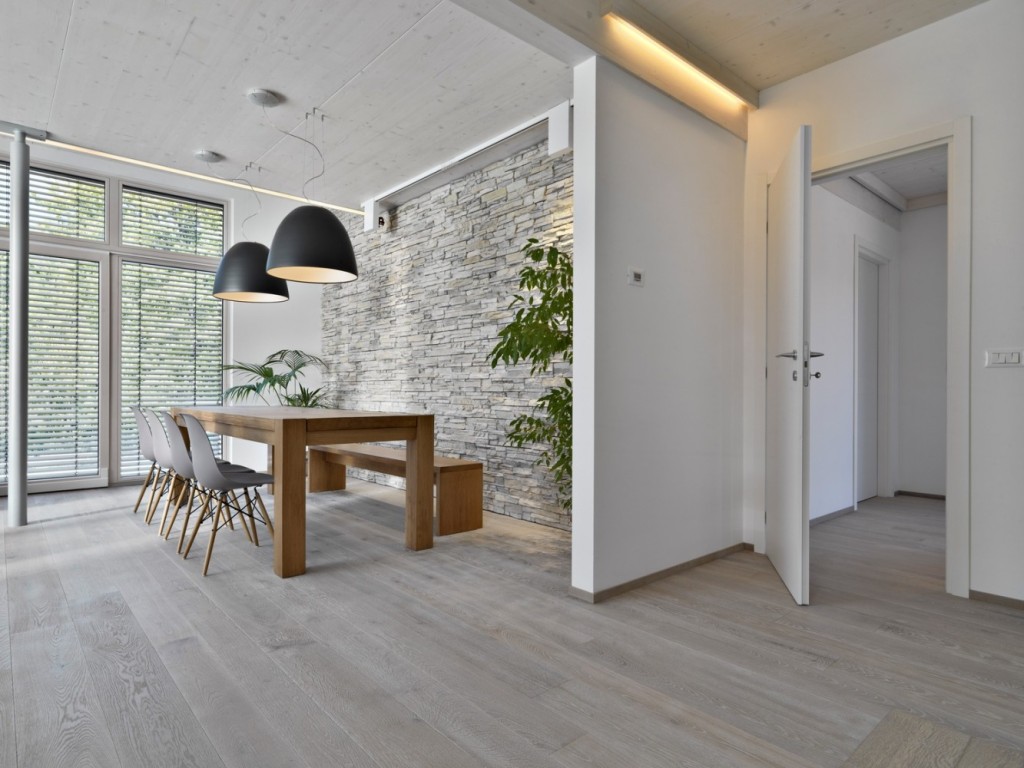Decorating focuses on visual appeal. Interior design takes it further by aligning the layout, function, and materials with your daily habits and personal standards. When you’re aiming for a high-end finish, the details matter as much as the overall concept. Each room has its own function and challenges, so the approach needs to shift accordingly.
A cohesive plan connects the rooms in a way that makes sense both visually and functionally, without making them identical. The following ideas explore how to approach each space with purpose, using design strategies that align with timeless, upscale interiors.
1. Custom Kitchens: Layout Meets Lifestyle
A luxury kitchen works well when the layout supports how you cook and host. That matters more than the price tag of the materials. If you’re looking into kitchen design Los Angeles, you’ll see how design firms there often work closely with clients to align their layout with the pace of their lifestyle. They prioritize customized configurations instead of standard blueprints, and they make design decisions based on how you move in the kitchen.
A high-end kitchen should feel as functional as it looks refined. It’s common to integrate a kitchen island with built-in storage, under-counter appliances, or even integrated seating that supports casual dining. Finishes matter, but they’re not the starting point. Think through the daily use—do you cook large meals or entertain regularly? Do you prefer open shelving or concealed cabinetry?
The design process often includes an in-home visit where a professional evaluates the physical layout, light sources, and flow between the kitchen and adjacent rooms. From there, you can build around elements like matte finishes, textured panels, or sleek cabinetry that maintains a sense of quiet luxury.
2. Living Rooms That Balance Comfort and Character
Living rooms function as both personal and social spaces, which means they benefit from versatile layouts and furniture design that supports different uses. Start with a comfortable but structured seating arrangement. Sectionals and accent chairs should be sized to the room—not oversized or too compact—and arranged to promote conversation.
High-end living rooms often feature a brass coffee table as a subtle statement. It adds depth and warmth without overwhelming the room. Pair that with neutral upholstery and incorporate bold patterns through rugs, pillows, or accent walls.
Contemporary elements like asymmetrical shelving or recessed lighting help refine the overall feel. A curated gallery wall adds personality without feeling casual. Use frames that match or intentionally contrast, but keep the art unified through theme or tone. If you’re displaying art pieces, avoid overfilling the wall. Give each piece room to breathe.
3. Dining Rooms With Purpose
The dining table sets the tone for the room and helps define how the space is used, not just how it looks. Materials like natural wood, glass, or stone add texture and anchor the room without relying on decoration. Lighting also plays a significant role. A low-hanging pendant or minimalist chandelier above the table can shape the room’s mood more than wall art or accessories.
Rather than matching chairs perfectly to the table, consider mixing tones or finishes for a more deliberate look. Don’t overcrowd the space with furniture. If you add a sideboard or storage unit, let it function as both a display and a utility. Stick to high-quality materials that are durable and maintain their appearance over time.
4. Bathrooms With Refined Functionality
Designing a high-end bathroom starts with scale and proportion. Too many details can make the space feel cramped, even if it’s large. Stick to a limited material palette—stone, wood, and metal work well together and can be repeated across surfaces for cohesion. If you’re working with a design team, they’ll usually assess lighting angles, vent placement, and water fixture alignment before any visual planning begins.
Consider adding recessed shelving in the shower area or installing a floating vanity for a cleaner floor line. Use large-format tiles to minimize grout lines and create a seamless appearance. Even with high-end finishes, the space should still function without fuss. If you want to add visual impact, focus on one area—like a sculptural tub or an oversized mirror—rather than spreading out accents across the room.
5. Bedrooms That Reflect Calm and Control
In a luxury bedroom, simplicity often does more than layering. Avoid too many visual statements and focus on symmetry, balance, and texture. Upholstered headboards, low-profile nightstands, and full-length blackout curtains offer more long-term comfort than decorative add-ons.
Stick to a restrained color palette—this is where the colors of luxury come in. Think muted tones with rich depth: charcoal, taupe, olive, or clay. These shades give you more flexibility with textiles and lighting choices. For flooring, natural materials like wood or soft wool rugs help anchor the room in comfort.
Storage matters here, too. Built-in wardrobes or custom storage walls can keep clutter out of sight. You can also work with professionals who specialize in personalized spaces, where the design is tailored to your exact clothing habits and morning routines. This way, form always follows function, without sacrificing elegance.
6. Multi-Use and Transitional Spaces
High-end homes often include spaces that aren’t defined by a single function. A reading nook, study corner, or open loft area can be designed with the same level of care as a bedroom or kitchen. These rooms benefit from layered lighting and modular furniture. Think wall sconces, floor lamps, and flexible seating that can shift with your needs.
You might add one or two art pieces that set a tone or include built-in cabinetry that works for display and storage. For flooring, continuity with the rest of the home helps maintain flow—use the same wood tone or repeat a similar tile pattern.

7. Entryways and Hallways With Intent
These are often neglected areas, but they set the tone for the rest of the home. A narrow entry can still feel high-end with the right proportions and a few focused elements. A console table, mirror, and a structured overhead light can pull the area together. Hallways benefit from wall-mounted lighting and repeated finishes, especially if they connect different rooms with varying design trends.
Small changes work best in these areas. A runner can soften echo, and vertical trim can change the perception of height. It helps to keep each design choice intentional rather than decorative for its own sake.
Final Thoughts
High-end design works best when every room is treated individually but connected by common threads—material, tone, rhythm, and utility. A strong design process helps translate your preferences into physical form, with professional insight to solve layout challenges and prioritize the right details.
A skilled design team will plan each room according to its use, scale, and role in the home. High-end results come from measured decisions, quality materials, and designs that hold up under daily use.












